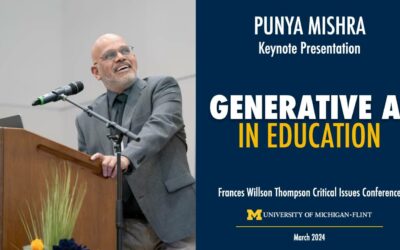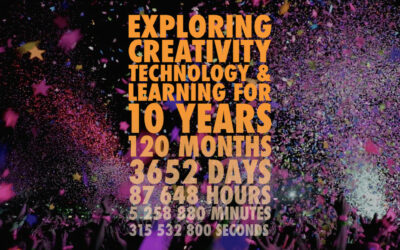
Students in my CEP 818 (Creativity in Teaching and Learning) have been using digital photography to explore a variety of topics related to trans-disciplinary creativity. I hope to showcase some of their work on this blog once the semester gets over. In the meanwhile, I received an email from Michael Hughes, a former alumnus of this course, and a teacher in Jakarta, Indonesia. In his email he provided some links to some really cool work his students have been doing.
At the heart of the assignment is, what he called, an “old school” idea, namely that “students had to define 10 vocabulary words, learn their meanings.” But he added a “tech” component in that the “definitions had to be graphics that illustrated the essence of the words.” How about that for breaking out of the infinite regress of using words to define other words!
Here are some links to work that his sixth grade students have done. Some of the images the students came up with are just wonderful. I have so many favorites that I would be hard-pressed to highlight any of them. Spare a minute and do it yourself.
This assignment works on so many levels. Let me count the ways. First, of course is the fact that students have to truly understand the word to come up with an appropriate picture. Second, engaging in this activity makes the words (which are often quite abstract) “concrete” in their minds in a powerful kind of way. There is of course an interesting paradox here. Words, these black squiggles on a page are often the most abstract form of representation – receiving their strength from this abstractness. The word “eclectic” for instance is a really abstract representation of the idea of eclectic. Making the word concrete in an image gives it a “here-now-ness” that helps understand its meaning. Third, and the flip side of the paradox, the danger of becoming too concrete via images, is undermined by the sheer variety of pictures that students have come up with to represent the same word, (and they are asked to view each other’s work as you can see from the comments on the blog posts). This means that students receive a rich range of possible meanings of a given word, and through that the concrete and unique nature of “an” image is broken down. Fourth, the assignment brings a layer of visual literacy to a standard “old school” purely verbal task, pushing students to think about issues related to the strengths of visual versus verbal representation. Fifth, and finally, putting it online means that this assignment and student works can now be easily shared with others (as Michael did with me, as his students do with each other, and I am doing now via this blog).
To me this is a great example of how easy access to networked digital tools can change transform the most simple of instructional assignments. This to me lies at the heart of the idea of repurposing technologies to make them educational technologies. TPACK anyone?
Thanks to Michael and his students for sharing.



Speaking of the selection of image to sell an idea… it seems as if we had a similar affection for the image in this post. It was really weird seeing here on your blog. It’s funny you know… I never thought of how the prolific use of images on my blog might evolve into me feeling something akin to “ownership.”
Of course I’m not talking about real “ownership.” Though I do revel in the idea that folks from such diverse locations can create words… images… video… schematics… etc., and that by the grace of sharing they can be mashed together to make meaning. That sort of asynchronous “collaboration” just really inspires me. So I obviously don’t own images like the one above. And yet- my selection of that same image: http://twurl.nl/1mmcde (about halfway down) was chosen so carefully that seeing it outside of that post… sort of made me feel as if I were seeing something of “mine” out of context. Spooky and yet cool.
Sean